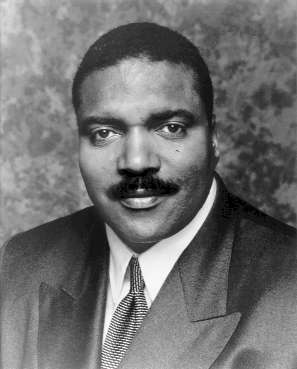The USM in 2010:
Responding
to the Challenges that Lie Ahead

Letter from the Chancellor and the Chairman


| Donald N. Langenberg | | | | | | | Nathan A. Chapman, Jr.
|
| Chancellor | | | | | | | Chair, Board of Regents
|
To the People of Maryland,
In its 1999 session, the General Assembly of Maryland directed
the Regents of the University System of Maryland (USM) to develop a new
strategic plan for the University System, one that is consistent with the State
plan for higher education and that incorporates the principles and priorities
for higher education articulated in State law. This is that plan.
It is founded on a careful analysis of current trends in the
demographics of Maryland's population, the continuing evolution of Maryland's
economy, and the increasingly competitive global marketplace. These trends
portend continuing substantial and fast-paced changes in the character of our
State and its people. The plan is ambitious but not novel. Ambitious because it
must be: the State's economic, social, and cultural future depends in large
measure on the USM -- the largest element of Maryland's higher education
enterprise -- effectively responding to these trends and significantly
increasing the State's intellectual capital. It is not novel because these
trends have been evident for some time, and thus this plan is an evolutionary
development, containing some of the strategies the USM has been pursuing for all
or part of the past decade.
The timeframe for this plan is the next decade, because over a
ten-year period we can predict reasonably well the circumstances in which we
must work. It also provides adequate time to create the necessary major changes
in our academic enterprise, but only if we begin to act now, aggressively and
strategically. The plan is intended to be a dynamic document, reviewed annually
and amended as necessary to reflect new information and needs, as well as
feedback from key stakeholders. We will measure its progress. We expect to be
held accountable for its implementation.
The plan's central premise is that Maryland is undergoing an
historic transformation leading to a high-tech, knowledge-based society and an
economy powered by a highly skilled, racially and ethnically diverse workforce.
If that is correct, then the continued success of Maryland in the global economy
depends crucially on the education and skills of its workforce. To put it
bluntly, whether Maryland's future will be bright or dismal depends almost
entirely on the quality, capacity, and performance of Maryland's entire
education system, from kindergarten to graduate school. The USM's role and
responsibility in this endeavor cannot be overstated.
An example will illustrate the magnitude of the task before
us. Our plan suggests that the proportion of baccalaureate degree holders among
Maryland's adult population should increase from the present 32% (already
second highest in the nation) to around 40%. This increase is a major goal
because the economic health of a state can be directly tied to the educational
level of its citizenry. The suggested increase equals about 400,000 new
baccalaureates over the next decade. At most, the number of traditional-age
college students in Maryland who will obtain a degree over the next decade will
be 100,000 - leaving a gap of 300,000 graduates. Attracting out-of-state
baccalaureates to Maryland, a process in which we will have to compete against
other states and regions, can close part of the gap. Lifting several hundred
thousand of Maryland's present adult citizens to the baccalaureate level must
close the remainder. This will require both a massive investment in the
education and training of Maryland's citizens and new methods of delivering
educational services to working adults.
The enormity of the challenge has not dissuaded us. Each of
the USM's eleven degree-granting institutions and two research institutions
has been involved in the development of this plan and is committed to its
implementation. But they cannot do it alone. They will need the full support of
each of you, Maryland's citizens and leaders. Every Maryland citizen must
understand that the most important investment each of us can make in our futures
is our own education, and that self-education is a life-long responsibility.
Maryland's political and business leaders must understand that the most
important investment they can make in our State's future is the perpetual
education of all its citizens.
Maryland's past investments in education have helped
position it among the nation's leading states by most measures. The advantages
we enjoy because of this support must be a foundation upon which we build, not
rest. The goals, objectives, and strategies identified in this plan provide the
blueprint for advancing our State's position. If we act deliberately -- but
quickly -- the plan will become a reality, and the next decade in Maryland will
be "The Decade of Education for All."
Donald N. Langenberg
Chancellor
Nathan A. Chapman, Jr.
Dir, Board of Regents
<<Previous
Table of Contents
Next>>